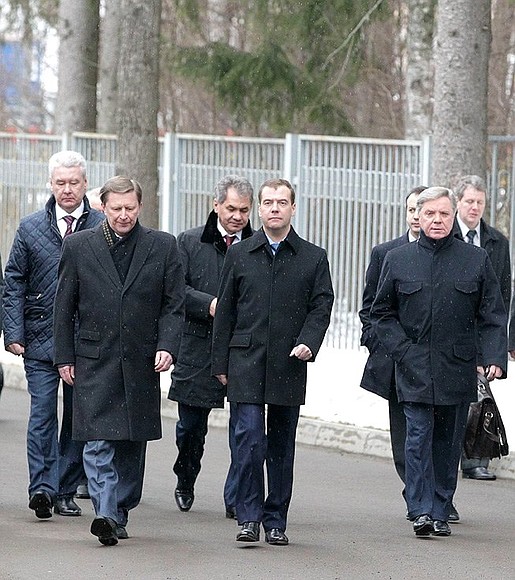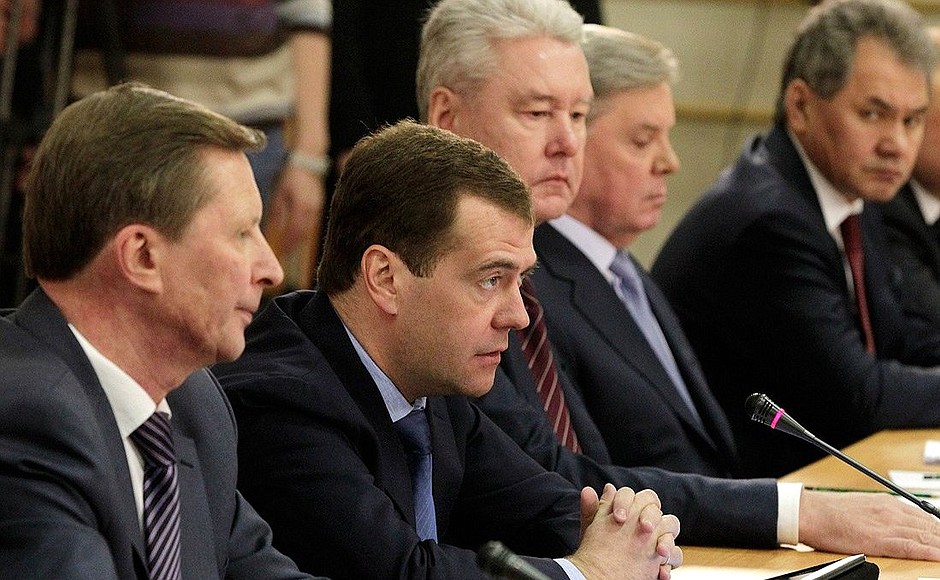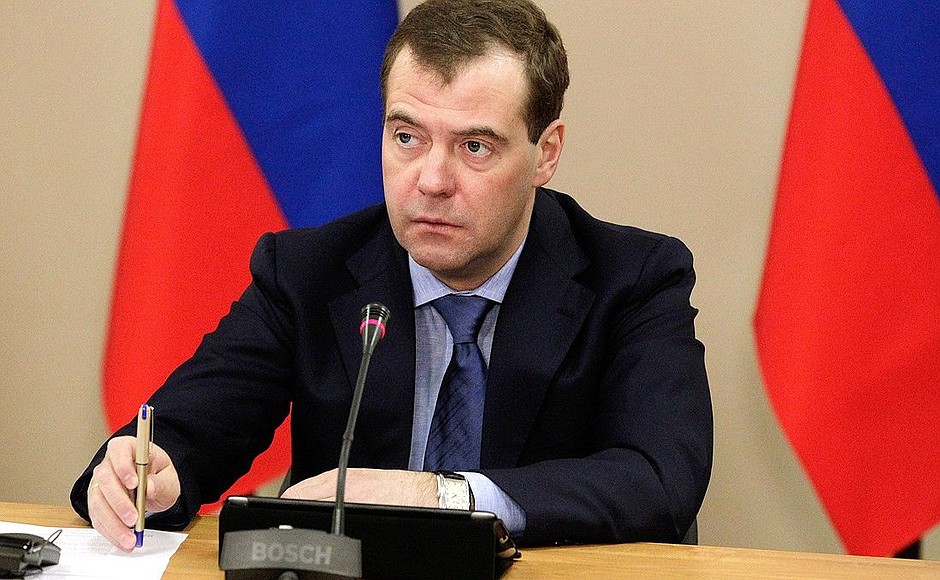Last July the President made the proposal to expand the city’s territories and gave the relevant instructions to the Moscow City and Moscow Region governments.
Speaking at the meeting, Mr Medvedev stressed that Moscow’s development must resolve a number of objectives, including better housing and living conditions for the city’s 11.5 million people, increasing Moscow’s contribution to the country’s innovative development, moving government and federal agencies to the new city districts, and boosting Moscow’s role as an international financial centre and one of the world’s tourism capitals.
* * *
President of Russia Dmitry Medvedev: Good afternoon,
We are here today to discuss the Moscow Agglomeration development, including with respect to developing an international financial centre.
I remind you that I made the proposal last July that we expand Moscow’s boundaries and move a sizeable share of government bodies to the new districts. I think the Moscow City Government and the Moscow Region authorities have worked productively since then to find optimum solutions for bringing within the Moscow city boundaries new land of 148,000 hectares in total. Moscow will increase almost 2.5-fold as of July 1 this year.
As the region with the biggest population in our country, Moscow has to move with the times and develop. The capital has always played a crucial part in attracting and introducing new knowledge and technology. The city’s expansion and growth have gone hand-in-hand with many of the key development stages in our country’s history. In the 1930s, the industrialisation underway around the country brought new plants and factories to Moscow too. In 1961, the city extended its boundaries to the Moscow Ring Road. This helped to dramatically ease the housing crisis the city faced back then and laid the foundations for the Moscow agglomeration and the development of satellite towns and science hubs such as Zelenograd, Korolev, and Troitsk, where we are today.
In our decisions on this latest expansion of Moscow City territories, we have not only taken into consideration past experience but also sought to address a number of top priority tasks. What are these tasks?
“Our task is to turn the whole greater Moscow area into a liveable and competitive megapolis that will be the development engine for the entire city and surrounding region and the neighbouring regions too.”
See also
The first of course is to be able to offer Moscow’s 11.5 million residents a more comfortable living environment. On many counts Moscow is certainly not a leader when it comes to quality of life, and the pace of development is slowing in some areas. The city has become densely built up over the years, but housing nevertheless remains a problem, with per capita housing space at one of the lowest levels in the country – 19 square metres per capita as compared to a national average of 23 square metres per capita. There is also a huge problem of traffic jams.
Moscow’s territory has increased by almost 20 percent over the last 50 years and came to 107,000 hectares before the decision to expand the city limits. But over the same time, the city’s population has almost doubled, rising from 6 million to nearly 12 million. Moscow today is one of the most densely populated big cities in Europe and the world with 11,000 people per square kilometre. For comparison, Berlin has 4,000 people per square kilometre, and Paris, London, and New York all have less than 7,000 people per square kilometre. This was one of the main reasons, perhaps the biggest reason, why we needed to make this decision.
The city’s new areas must become home to comfortable residential districts, offices, hotels, parks, and sports facilities. Let’s not forget that Russia will host the football World Cup in 2018. I propose that we look at the possibility of establishing one of the training bases for the participating teams in the new city territories.
Let me say too, that these new areas must not turn into anonymous dormitory suburbs of the kind that Moscow already has in plenty. I propose that we look at a number of ideas, including the possibility of a total ban on using old construction models and methods in the new territories. Obviously, priority in the new areas should go to developing low-rise construction. We need to get the leading global architectural companies involved so as to design our projects to the latest European standards. The Government has until May to get all of the needed documents ready. I hope that Moscow’s experience here will become a model for other cities to follow in developing a modern urban living environment.
The second task we need to address is that of increasing Moscow’s contribution to our country’s innovative development. Moscow must set the standards for a good investment climate and quality environment for developing the investment we need in order to support and advance our innovative development. This requires us to modernise our scientific and industrial potential and develop innovative infrastructure. It is for this reason that the Skolkovo innovation centre and the Troitsk science hub will come within the new city boundaries.
”Moscow must set the standards for a good investment climate and quality environment for developing the investment we need in order to support and advance our innovative development. This requires us to modernise our scientific and industrial potential and develop innovative infrastructure.“
Also very promising is the idea of building big university and medical research centres in the new areas. Like Moscow’s other universities and hospitals, they will be not just local, but national centres serving the whole country.
I also stress the point that building this new Moscow should be done primarily by the city’s own people – we have enough people after all in Moscow and the Moscow Region – and not by bringing in migrants en masse.
Third, plans are being drawn up for moving government and federal agencies to the new territories. We need to do this for a number of reasons, including in order to free up Moscow’s historic centre from the large number of state bodies taking up space there. I want this work to proceed without delay. All of the main decisions on this matter need to be taken before the budget drafting is completed this year, so as to be able to start making the plans this year.
It is also important to ensure that the new territories have good transport links to the city centre and the airports. We will therefore begin reconstruction of Moscow-Kaluga highway this year and also develop a project for traffic-light free roads running into central Moscow.
Finally, the fourth task is to boost Moscow’s role as an international financial centre and global tourism capital and venue for congresses, exhibitions, and business events. These are all things that we need to work on very attentively.
In conclusion, let me stress once more that our task is to turn the whole greater Moscow area with its nearly 20 million people into a liveable and competitive megapolis that will be the development engine for the entire city and surrounding region and the neighbouring regions too.
<…>



